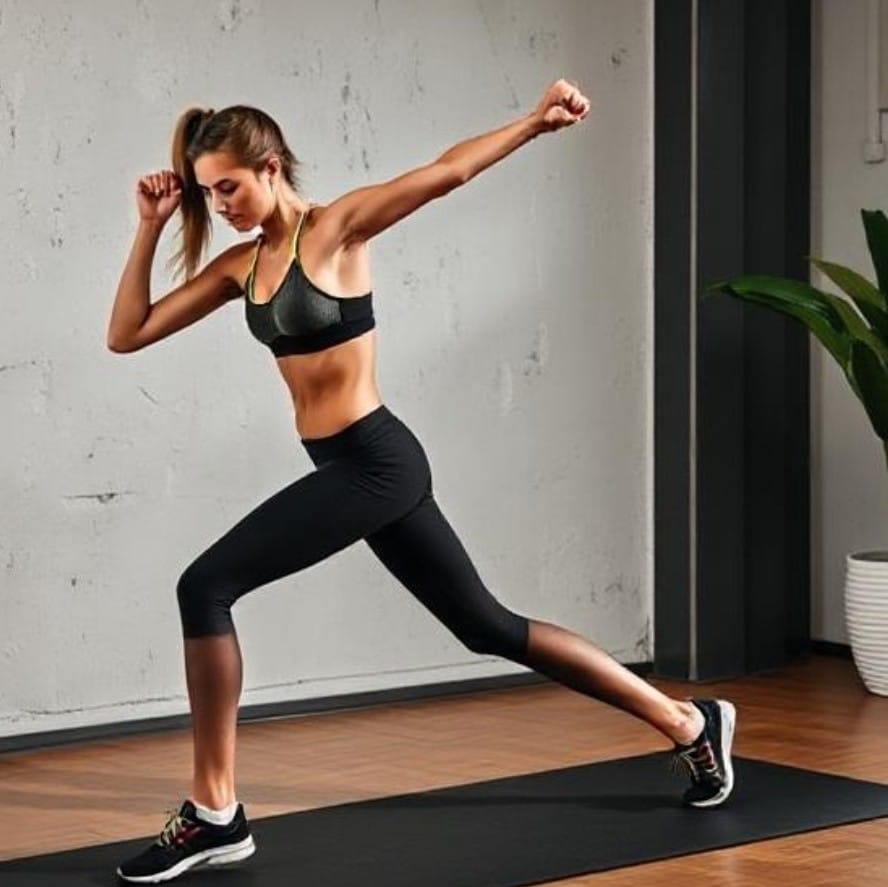A full body workout is one of the best ways to build power, burn fat, and enhance overall fitness. Full-body workouts are performed on all major muscle groups on the same training day-in other words, not in split training.
In this post, we will cover the best exercises and a detailed followup on the workout, along with professional tips to speedily achieve your results. Regardless of your experience as a newbie or an advanced athlete, you should be able to attain your fitness goals faster by reading this guide.
Why Choose a Full Body Workout?
A full-body workout offers several advantages when compared to other workout routines:
Time Efficient-For busy people training only 2-4 times a week.
Multiple Muscle Engagement-Multiple muscle groups are being worked on per session, thus leading into balanced strenorthand aneven growth in mass.
More Calories-You will be burning more calories as a result of a greater number of muscles being put to work.
Functional Strength builds-Reproduces real-life movements to support performance in everyday activities and sports.
Flexible Scheduling-Can be done anywhere from 2- to 4-times weekly.
Now a well-balanced full-body workout expressed is all these things, and each of these aspects must be considered.
Key Components of an Effective Full-Body Workout

Strength Training: Compound exercises such as squats, deadlifts, and push-ups train several muscle groups.
Cardiovascular Conditioning: Aerobic exercises such as HIIT, jumping rope, or running improve endurance and fat loss.
Mobility and Flexibility: The combination of dynamic stretches and yoga will keep injuries in check and also boost performance.
Recovery and Nutrition: Resting well, drinking lots of water, and taking adequate protein help with muscle recovery.
The inclusion of all the above assures you of a proper full-body workout and much success at the end.
The Ultimate Full-Body Workout Routine
Workout Structure
Good Full-Body Workout should have:
Warm-up-(5-10 minutes): Warm up the body with dynamic stretches, jogging, or jump rope.
Strength Training-(40-45 minutes): Compound lifts should be the focus for optimum muscle recruitment.
Cardio-(10-15 minutes): High-Intensity Interval Training for that nice fat burn.
Cool-down and Stretching-(5-10 minutes): Prevents soreness and improves flexibility.
Full-Body Circuit Training
Perform 3-4 sets of each exercise, resting 60-90 seconds between sets.
Squats-(Targeting legs, glutes, core)-3 sets of 10-12 reps
Deadlift-(Strengthening hamstrings, glutes, back)-3 sets of 8-10 reps
Push-ups or Bench Press-(Heaving chest, shoulders, triceps)-3 sets of 10-12 reps
Pull-Ups or Bent-Down Rows-(Back and biceps)-3 sets of 8-10 reps
Planks or Hanging Leg Lifts-(Core and stability)-3 sets of 30-45 seconds.
This Full-Body Workout provides comprehensive training for all the leading muscle groups, leading to balanced muscle gain while trimming fat.
Tips for Maximizing Results

Here are some tips to make the most of your Full-Body Workout:
Progressive Overload: This is a good way to keep challenging the muscles by gradually increasing weights or repetitions.
Maintain Proper Posture: This will keep injuries at bay through effective exercise forms.
Supplement with Stretch and Mobility Work: Your performance will be improved.
Feed Yourself: Sufficient proteins help in the repair and growth of muscles.
Never Compromise on Rest and Hydration: Recovery matters as much as training.
These hints will not only better your Full-Body Workout results but also keep you on the right path toward fitness goals.
Common Mistakes to Avoid
Common mistakes can make even the most effective Full-Body Workouts useless. Other things to watch out for:
Training Too Hard: Too much training without adequate recovery will eventually lead to injury or burnout.
Neglect for Proper Technique: Heavy lifts without proper lifting form increase one’s chances of getting injured.
Under-eating Protein During Recovery Phases: Muscle tissue requires adequate nutrition to grow.
Failure to Warm Up and Cool Down: Those extra efforts will, if nothing else, go a long way to reducing the risk of injury and stiffness post-exercise.
Staying aware of these mistakes will ensure Full-Bodied Workouts work safely and with the advantages you expect.
Sample Weekly Full-Body Workout Schedule
Follow this routine to gain maximum results with a structured Full-Body Workout:
Monday: Full-Body Strength + 15 min cardio HIIT
Wednesday: Full-Body Strength + 15 min Mobility Work
Friday: Full-Body Strength + 10 min Sprint Intervals
Sunday: Active Recovery (Yoga, Walking, or Light Stretching)
This balance enables muscle building, fat loss, and recovery.
FAQs
1. How often should I do a Full-Body Workout?
A Full-Body Workout should be performed between 2 to 4 times a week according to your fitness levels and goals. Beginners should work on either 2 or 3 sessions a week, while more advanced trainees could work between 3 to 4 sessions with proper rest intervals.
2. Can I do cardio with a Full-Body Workout?
Yes! After all, ten to fifteen minutes of cardio following the strength-training session (think HIIT, jump rope, or treadmill sprints) will surely increase fat loss and stamina. Overall, going for a lot of cardio on strength-training days can wear out your muscles.
3.What equipment do I need for a Full-Body Workout?
You can perform a Full-Body Workout using bodyweight exercises like push-ups, squats, and lunges, or you may increase resistance with dumbbells, barbells, kettlebells, or resistance bands.
4.How long should a Full-Body Workout last?
It should take about 45-60 minutes to put together a good Full-Body Workout to include warm-up, strength training, cardio, and cool-down. Do your best to keep them short and vigorous, rather than long and drawn-out.
5.Can I build muscle with a Full-Body Workout?
Definitely! A Full-Body Workout utilizing compound movements (squats, deadlift, bench press, pull-ups) with progressive overload (increasing weight or reps progressively) can encourage good muscle growth.
6.Is a Full-Body Workout good for fat loss?
Yes! Other things being equal, a Full-Body Workout will burn more calories than isolated workouts because of the aforementioned engagement of multiple muscle groups. When combined with proper nutrition and cardio: it is one of the best methods of losing fat and improving body composition.
What should I eat before and after a Full-Body Workout?
Before Workout: A small meal of protein and carbohydrates (e.g., banana with peanut butter, Greek yogurt with berries, or oatmeal with protein powder).
After Workout: For muscle recovery, a protein-rich meal (grilled chicken with rice and veggies, protein shake with banana, or salmon with quinoa).
Can beginners do a Full-Body Workout?
A Full-Body Workout can be a great place for access to overall strength and endurance for beginners without overwhelming a beginner with complicated training techniques. One can start with bodyweight exercises and slowly add weights as strength improves.














